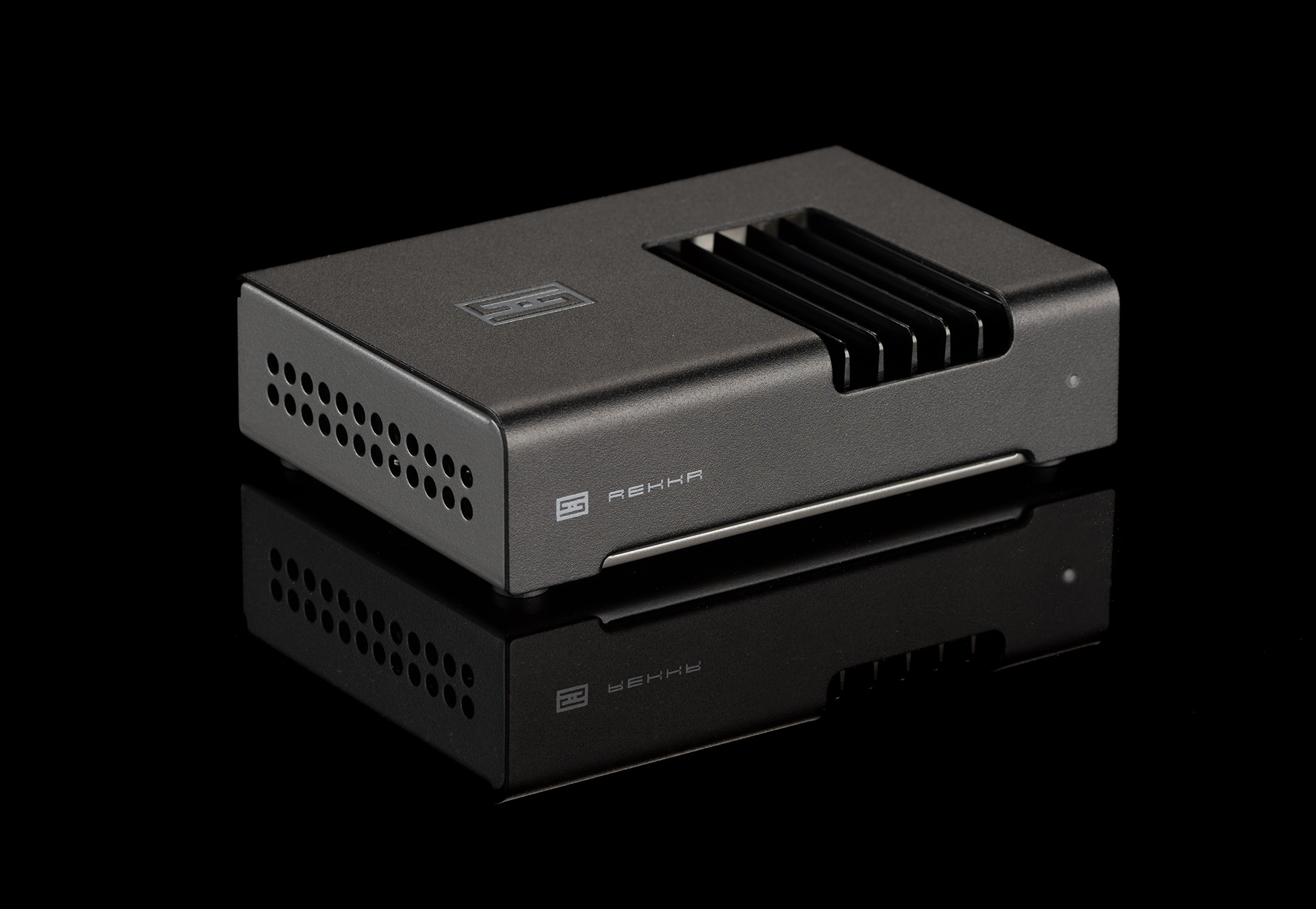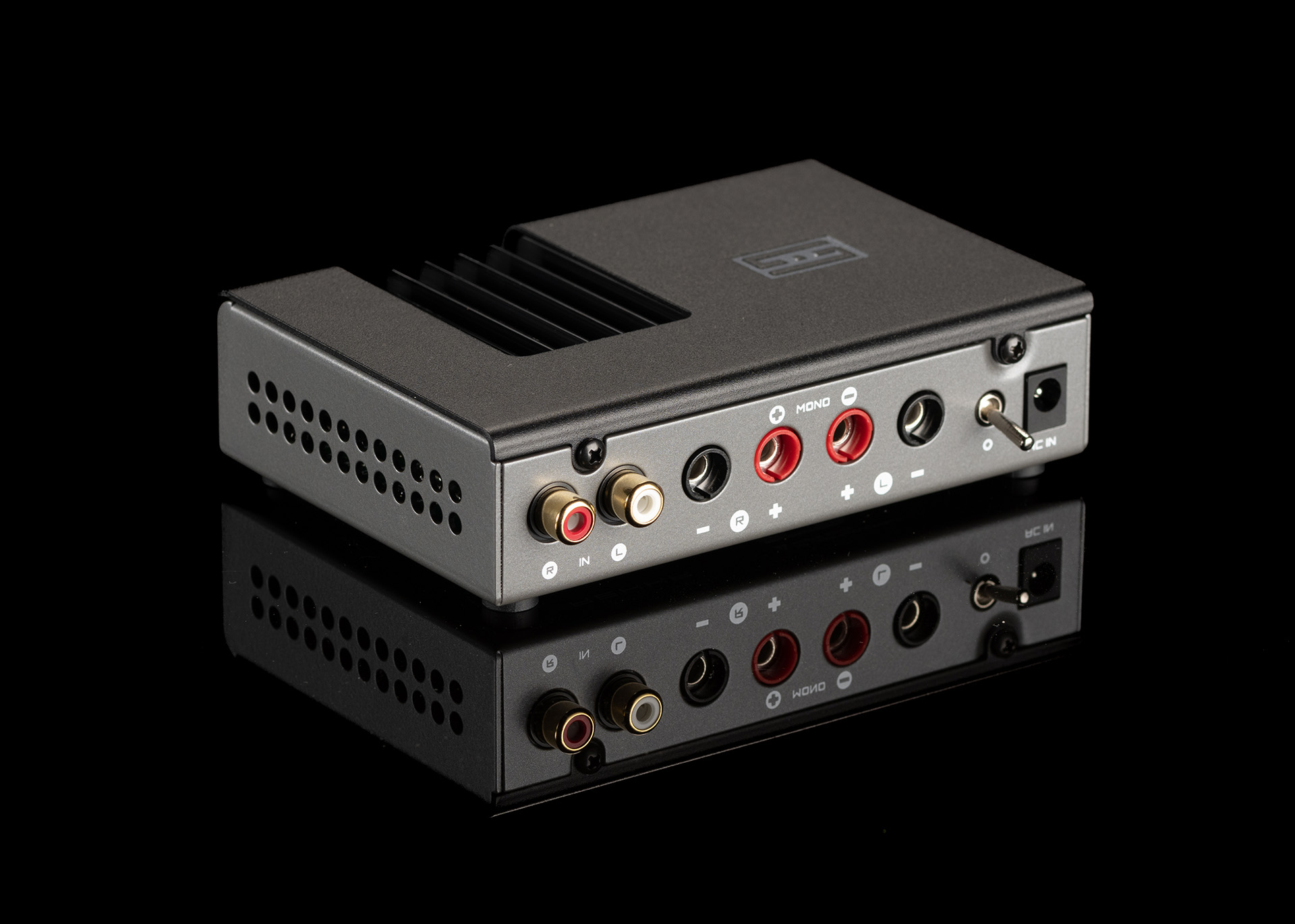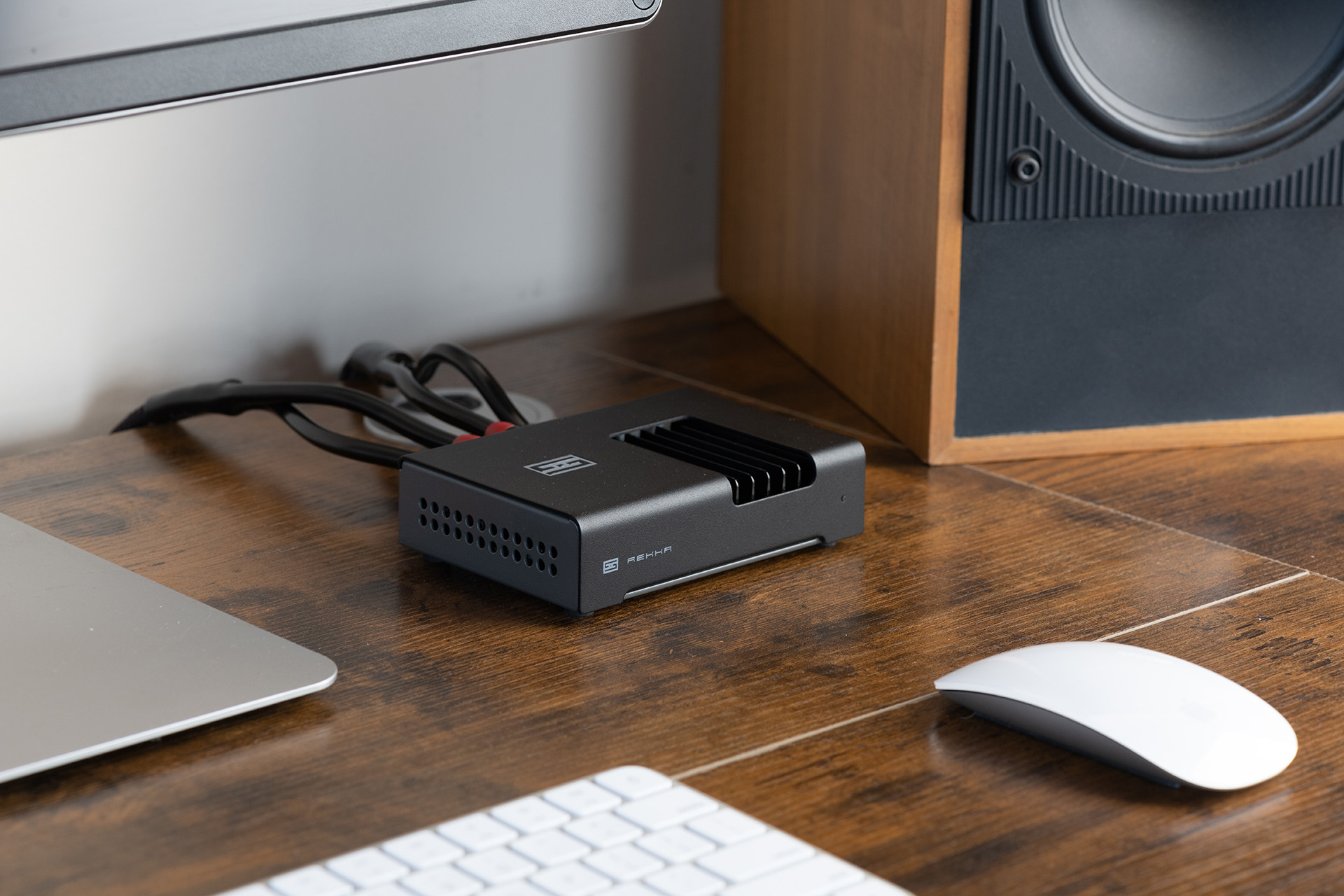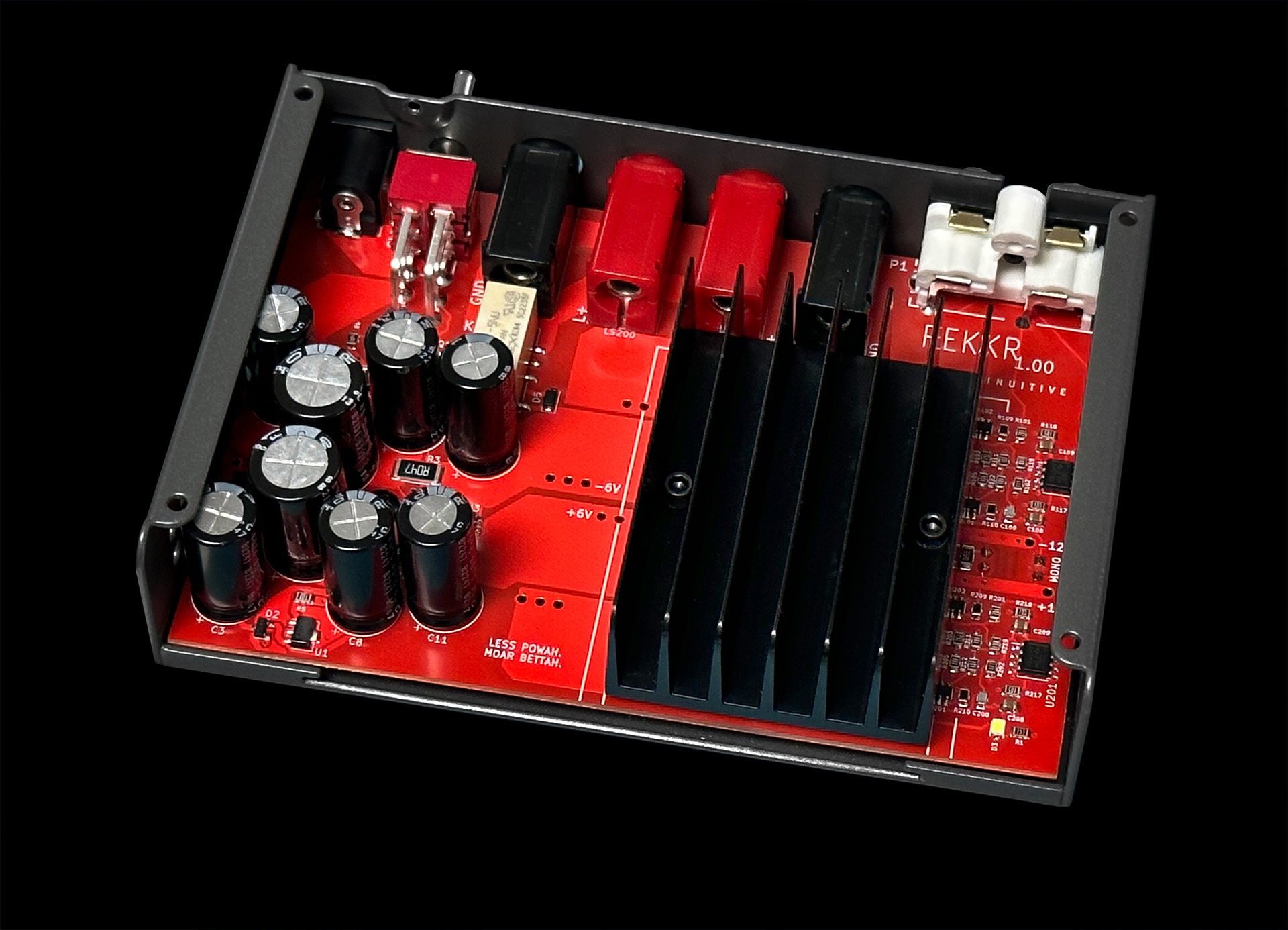Power Output:
Stereo, 8 Ohms: 2W RMS per channel
Stereo, 4 Ohms: 3W RMS per channel
Mono, 8 ohms: 4W RMS
Frequency Response: 20Hz-20Khz, +/-0.01db, 3Hz-500KHz, +/-3dB
THD: <0.001%, 20Hz-20KHz, at 1V RMS into 8 ohms
IMD: <0.001%, CCIR, at 1V RMS into 8 ohms
SNR: >120dB, A-weighted, referenced to full output
Damping Factor: >100 into 8 ohms, 20-20kHz
Gain: 4 (12dB)
Input Sensitivity: AKA Rated Output (Vrms)/Rated Gain. Or, 4/4. You do the math.
Input Impedance: 20k ohms SE
Crosstalk: >80dB, 20-20kHz
Inputs: L/R RCA jacks for stereo input, switch for mono input on R jack
Topology: fully discrete, fully complementary current feedback, no capacitors in the signal path
Oversight: over-current and over-temperature sensors with relay shut-down for faults
Power Supply: 6VAC, 2A wall-wart, 12,000uF filter capacitance, plus boosted, regulated supply to input, voltage gain and driver stages
Power Consumption: 12W maximum
Size: 5” x 3.5” x 1.25”
Weight: 1 lbs




